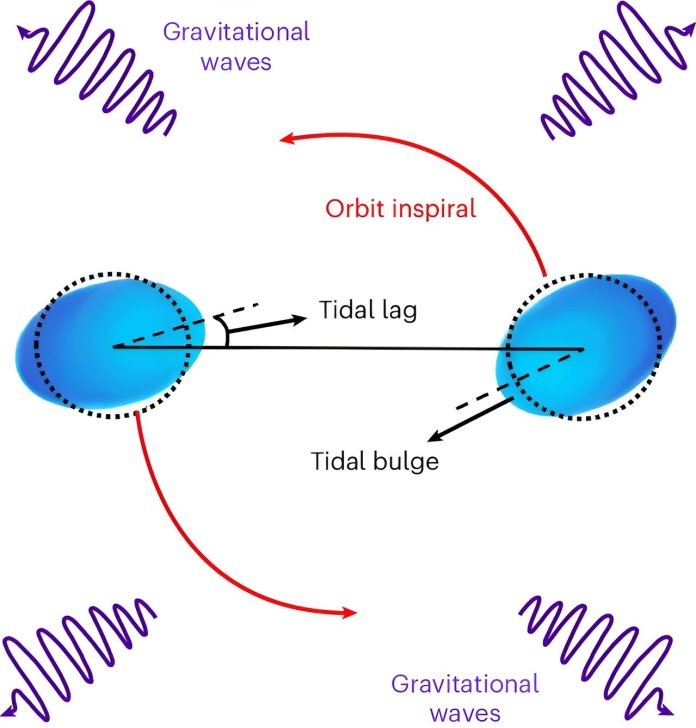
Researchers are gaining new insights into the mysterious world of neutron stars, thanks to gravitational waves.
These waves, ripples in space caused by massive objects like neutron stars, are helping scientists understand how these incredibly dense stars work.
Nicolas Yunes, a physics professor at the University of Illinois Urbana-Champaign, leads a new study exploring the effects of tidal forces within neutron stars and how they can teach us more about the universe.
Neutron stars are the collapsed cores of large stars and are the densest stable objects in the universe.
They are much denser and colder than anything we can create with particle colliders here on Earth.
According to Yunes, who is also the director of the Illinois Center for Advanced Studies of the Universe, studying neutron stars could reveal hidden properties of astrophysics, gravitational physics, and nuclear physics that play a key role in how the universe functions.
Gravitational waves, first observed in 2015, have opened up a new way to study neutron stars.
These waves carry information about the stars’ properties as they travel through space for millions of light-years.
By detecting and analyzing gravitational waves on Earth using advanced detectors like the European Laser Interferometer Gravitational-Wave Observatory (LIGO) and the Virgo Collaboration, scientists can learn about the internal structure of neutron stars.
Yunes and his team were particularly interested in how tidal forces, which distort the shape of neutron stars, affect their movement in binary systems—where two neutron stars orbit each other.
These tidal forces could give clues about the internal material properties of the stars, like viscosity, which is a measure of how much internal friction the stars have. This friction might help scientists understand the processes happening inside neutron stars, including how energy moves in and out of the system.
The team used data from a famous gravitational wave event called GW170817, which was caused by the collision of two neutron stars.
Using computer simulations and complex data analysis, the researchers were able to detect the effects of tidal forces in this event.
Although the gravitational wave signal was not strong enough to directly measure the viscosity of the neutron stars, the team was able to make the first-ever estimate of how much viscosity could exist inside neutron stars.
Their findings were published in the journal Nature Astronomy.
Yunes believes this research is a significant step forward in understanding neutron stars and builds on decades of work in nuclear physics at the University of Illinois.
The collaboration between different research groups and the access to data from powerful gravitational wave detectors like LIGO and Virgo make this study a major contribution to the field of astrophysics.



